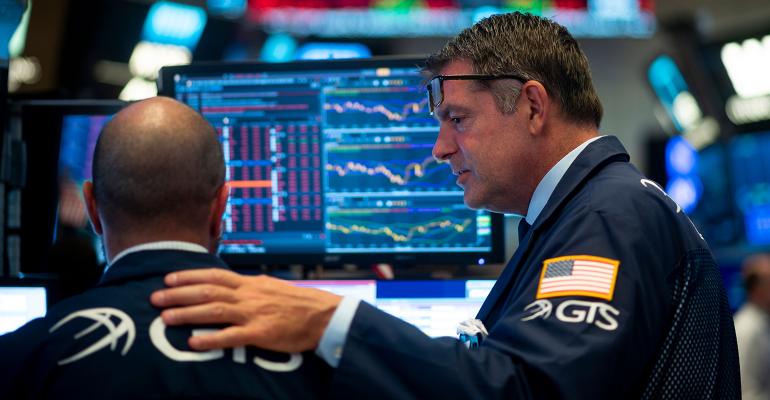U.S.-listed ETF assets recently breached the $4 trillion mark. With the popularity soaring in recent years, so has the criticism.
ETFs, according to the critics, exacerbate volatility, make price discovery difficult, threaten the less liquid corners of the market and worsen corporate governance by putting a large slice of corporate ownership in the hands of the big three ETF issuers.
Do these arguments hold water?
“There are some common myths about ETFs, with the biggest being that the ETF structure is inherently, systemically risky,” says Dave Nadig, managing director of ETF.com. “I’ve been hearing the refrain since the 1990s that ETFs haven’t been crash tested. I would argue that ETFs are one of the most battle-tested structures we have.”
Some critics say that just as a large influx of money into ETFs helped boost the stock market over the past 10 years, a sharp outflow from ETFs could send the market reeling.
But Alex Bryan, director of passive strategies for Morningstar, notes that ETFs don’t change investor behavior. “People would still be moving in and out of the market without ETFs,” he says. “Stocks could still move together if people want to lessen exposure. ETFs don’t change what investors want, they just make it easier to gain exposure to what they want.”
ETFs based on broad stock-market indexes attract the most assets, and in this high-liquidity space, volatility hasn’t been an issue, says Jack Ablin, chief investment officer of Cresset Wealth Advisors in Chicago.
Of course not every corner of the ETF market has the heavy trading of major stocks. “There is the thinnest grain of truth to the liquidity argument,” Nadig says. For example, if you invest in a high-yield municipal bond ETF, and everyone tries to get out of the market at the same time, the price of the ETF may well disconnect from the underlying bonds, he acknowledges.
But that’s simply because the bonds haven’t traded and thus their price doesn’t reflect the selling of ETF shares. “That’s a feature, not a bug,” Nadig says. “The ETF price is real. The ETF doesn’t create liquidity in the underlying bonds, but it can create proxy liquidity and price discovery for the underlying bonds.”
Some critics argue that the shift to passive funds from active has deterred price discovery, because it’s active managers and analysts who perform price discovery. Both passive and active U.S. equity funds (including ETFs and mutual funds) had about $4.3 trillion in assets as of April 30, according to Morningstar.
That means active managers have plenty of money to put to work for price discovery. In any case, “where price discovery occurs is on the margin when a trade takes place,” Bryan says. And he notes that the overwhelming majority of trading comes from active managers, as passive managers by definition trade less.
Concern has arisen that the concentration of equity shares among ETF providers BlackRock, Vanguard and State Street will lead them to collude negatively on corporate governance issues. “But if you look at how they vote, they are neither rubber stamps for management or activist investors,” Nadig says. “Their voting is more nuanced than expected.”





